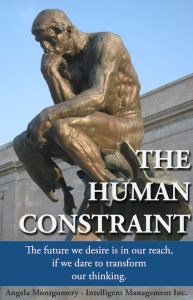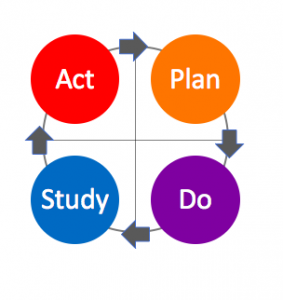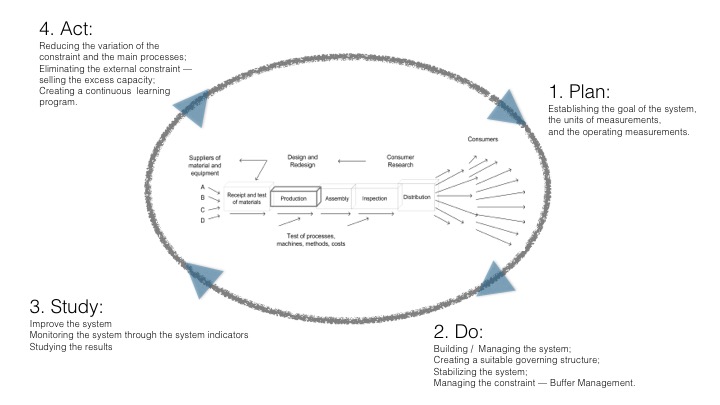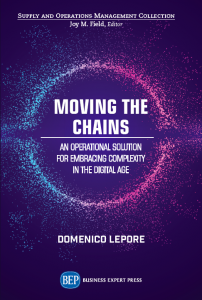
If we want to manage our organizations more effectively, profitably and respectfully, we need to heed the work of Dr. W. Edwards Deming, American physicist and statistician, and the man who helped Japan rebuild itself after World War II. Though Deming is regularly quoted in articles and blog posts, sadly it is often out of context and rarely with true understanding of his major contribution as one of the best minds in the field of management and organization science. So today’s post offers a little insight into Deming in an extract from the business novel ‘The Human Constraint‘ and its online Knowledge base. In this excerpt, the freelance writer, May, is going through her notes connected with the TPK Holdings project she has been hired to cover.
May set a steaming mug of tea down by her computer, opened her notebook and pulled up Wikipedia onto her screen. In spite of Sam’s energetic conviction about Deming, she suspected it would be a little tedious to research an expert in statistics. But research it she must if it was such an important part of the TPK Holdings project. She scanned the pages about the long-necked, eagle-headed man with spectacles and a kind smile, picking up highlights of Deming’s career: academic prestige, statistical work to improve wartime production, massive impact on rebuilding Japan, shaking up of Ford Motors in the 1980s to take it from losses to consistent profit. Surprisingly, as May surveyed the man’s long and successful career, what emerged was not just that he was a national and international hero, what emerged loud and clear was his voice. A resounding, lambasting, fearless and unwavering voice, crying out down through the decades against stupidity, against people, even in the highest positions who didn’t know what to do or how to do it. How could it be that managers of huge organizations could get things so wrong? They would never have even taken his advice if they’d kept making money. Just as Sam had said, the fact that you had breakfast doesn’t mean everything is OK. But when the Japanese began eating the American car manufacturers’ lunch, they too decided to listen to Deming. With some success. She organized the main elements of what she understood about his approach into bullet points:
• application of statistical methods to industrial production and management
• extension of these ideas to processes by which enterprises are led and managed
• Ford management actions responsible for 85% of problems in developing better
cars
• Failure to plan brings about loss of market and loss of jobs
• Performance of anyone is governed by the system
• structure of organization holds key to improving quality of output
• production viewed as a system – not just departments, but processes, feedback
and customers are part of the picture
• Deming cycle: Plan, Do Study, Act (scientific method)
• Inspection does not lead to quality. Quality has to be built into the product.
• Normal variation and special variation?
She also added a quote from Deming in her notebook:
“Long-term commitment to new learning and new philosophy is required of any management that seeks transformation. The timid and the fainthearted, and the people that expect quick results, are doomed to disappointment.”
The voice boomed on in her head. Here was a man who had worked ceaselessly into his nineties, with an oxygen tank and a wheelchair, because he had an urgency of purpose. Nothing less than transformation. Transformation of the prevailing management style into one of system optimization. Instead of an organization being artificially divided up into functions and departments, it should be understood as one, unified system, so information can flow from the outside all the way through to the customer, then back again in a feedback loop, allowing continuous improvement.
She could see why Sam was so enthralled. This was so much more than business, or statistics. It was the vision of a new world. She noted down another quotation and underlined it, struck by its weight and vast implications:
“The individual, transformed, will perceive new meaning to his life, to events, to numbers, to interactions between people.”
How did this transformation of the individual take place? Who had achieved it? What kind of meaning did they discover? She wanted to pick up the phone and call Sam right away to ask him about this.

Online Knowledge Base for ‘The Human Constraint’
The above is an excerpt form Chapter 4 of ‘The Human Constraint’ business novel. Every chapter is supplemented with an online Knowledge Base. The text below is from the Knowledge Base for Chapter 4.
In Chapter 4, May researches on her computer into the subject matter regarding the TPK Holdings venture. One of the things she makes a note of in connection with W. Edwards Deming is the PDSA cycle.
The PDSA cycle is a way of embedding the scientific method into management and ensuring continuous improvement. It is central to any attempt to create Quality. It is also invaluable when introducing any kind of change. It allows management to be more scientific by triggering a more systemic use of the intellect.
Each of the four steps of the cycle must be guided by statistical insight. The PDSA cycle is rooted in the epistemological belief that phenomena must be described and understood in statistical terms. While this statistical vision of the world is largely applied in the investigation of the natural world, it has only been adopted by Industry in a limited way and completely misapplied or ignored by economists and financiers, not to mention accountants.

The Ten Steps of the Decalogue are founded on the principle of continuous improvement. For this reason they employ the Plan, Do, Study, Act continuous improvement cycle designed by Deming, and indeed the entire ten steps embody that cycle pattern in the way they are carried out. This can be seen clearly when we map out the ten steps of the Decalogue and their four main phases onto the PDSA cycle itself.







Leave a Reply